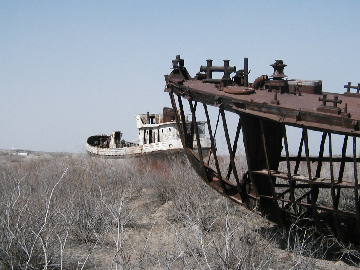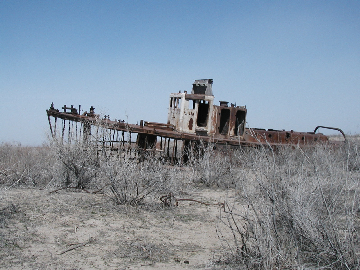
Moynak is a depressing place. There’s no other way to say it and no reason to hide it. Everyone knows what has happened to this once well-off community.
Moynak used to lie on the southern shores of the Soviet Union’s great Aral Sea, today part of Uzbekistan. Since 1960, the sea has shrunk to 10% of its original size and is now nearly 100 kilometers from Moynak. The town’s once thriving fishing industry is entirely shot.


